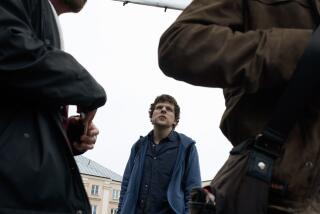Review: ‘West Side Story’ is Steven Spielberg’s most exhilarating movie in years
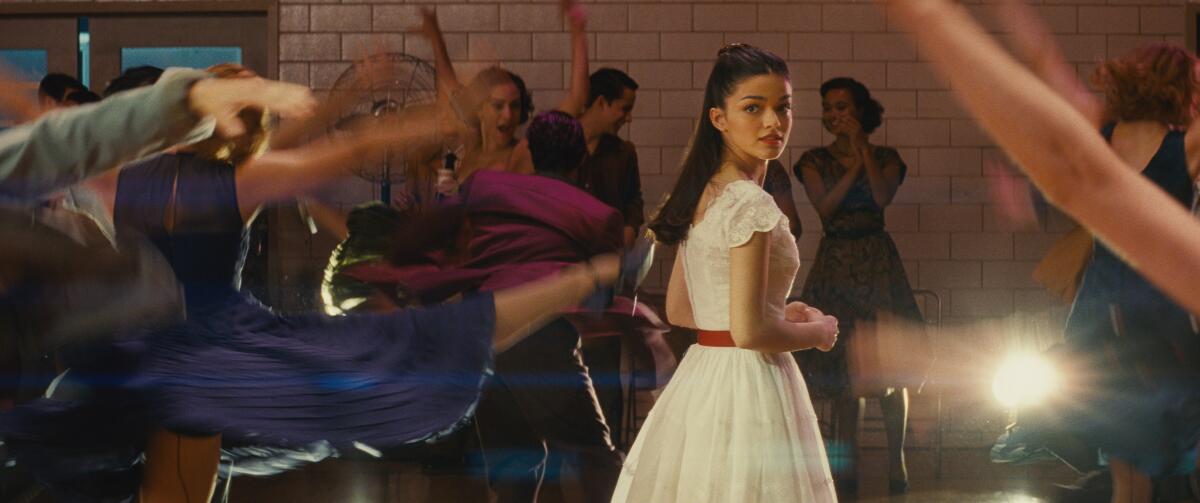
The Times is committed to reviewing theatrical film releases during the COVID-19 pandemic. Because moviegoing carries risks during this time, we remind readers to follow health and safety guidelines as outlined by the Centers for Disease Control and Prevention and local health officials.
At the beginning of Steven Spielberg’s brilliantly directed “West Side Story,” the Jets whistle, snap their fingers and pirouette around New York, a city that looms and sprawls but is still nowhere big enough to contain their brash, combative energy. So far, so familiar. But anyone who grew up on Robert Wise and Jerome Robbins’ 1961 Oscar-winning smash — and who has memorized every chord of Leonard Bernstein’s music, every step of Robbins’ choreography and every lyric composed by (sob) the late, great Stephen Sondheim — will immediately spot some differences. (And I don’t just mean the regrettable absence of the word “Fox” from the 20th Century Studios logo.)
Rather than opening with lofty aerial views of Manhattan, Spielberg’s movie starts off lower to the ground, snaking its way through the brick-strewn rubble of a San Juan Hill tenement that’s been demolished to make way for Lincoln Center. A patina of 1950s social realism has long been one of this musical’s selling points, and it gets an extra layer of grit here in the barbed wire and twisted metal of Adam Stockhausen’s production design, plus the exuberant athleticism of the cinematography (by Spielberg’s longtime lens man, Janusz Kaminski). Once the dancing begins, the camera doesn’t seem to be recording so much as propelling the performers’ movements, matching and even amplifying their mix of balletic grace and street-gang aggression.
And such aggression! Led by Riff (Mike Faist, spectacular in his wiry physicality and wise-guy attitude), the Jets swiftly desecrate a local mural of the Puerto Rican flag, provoking a startlingly brutal clash with their archrivals, the Sharks. The racial divisions feel especially fierce, not just because of the slurs flying back and forth but because, in contrast with the earlier film, the Sharks are actually played by Latino actors (none more arresting than David Alvarez as their swaggering leader, Bernardo). I don’t mean to single out this casting as some sort of accomplishment: It’s 2021, for heaven’s sake. But it’s also, of course, the ’50s. And the obvious care taken by Spielberg and his screenwriter, Tony Kushner — here wringing an entirely new script from Arthur Laurents’ original book — speaks to the cultural firestorms that “West Side Story” seems to ignite with each new iteration (including Ivo Van Hove’s very different, divisive 2020 Broadway revival).
As with most updates of beloved material, the mere fact of this movie’s existence has provoked its fair share of indignation. Some of the criticism has focused on Hollywood’s remake addiction, but more of it has to do with the troubling, complicated legacy of “West Side Story” itself, whose mashup of broad archetypes (ah, angry, impetuous youth!) and reductive ethnic stereotypes has long been a source of contention. There may be no greater emblem of the show’s inextricable triumphs and failures than Rita Moreno’s 1961 performance as Anita, a role for which she was forced to wear brown makeup — a singular degradation for the lone Puerto Rican member of the cast — and for which she won a history-making Academy Award for supporting actress.
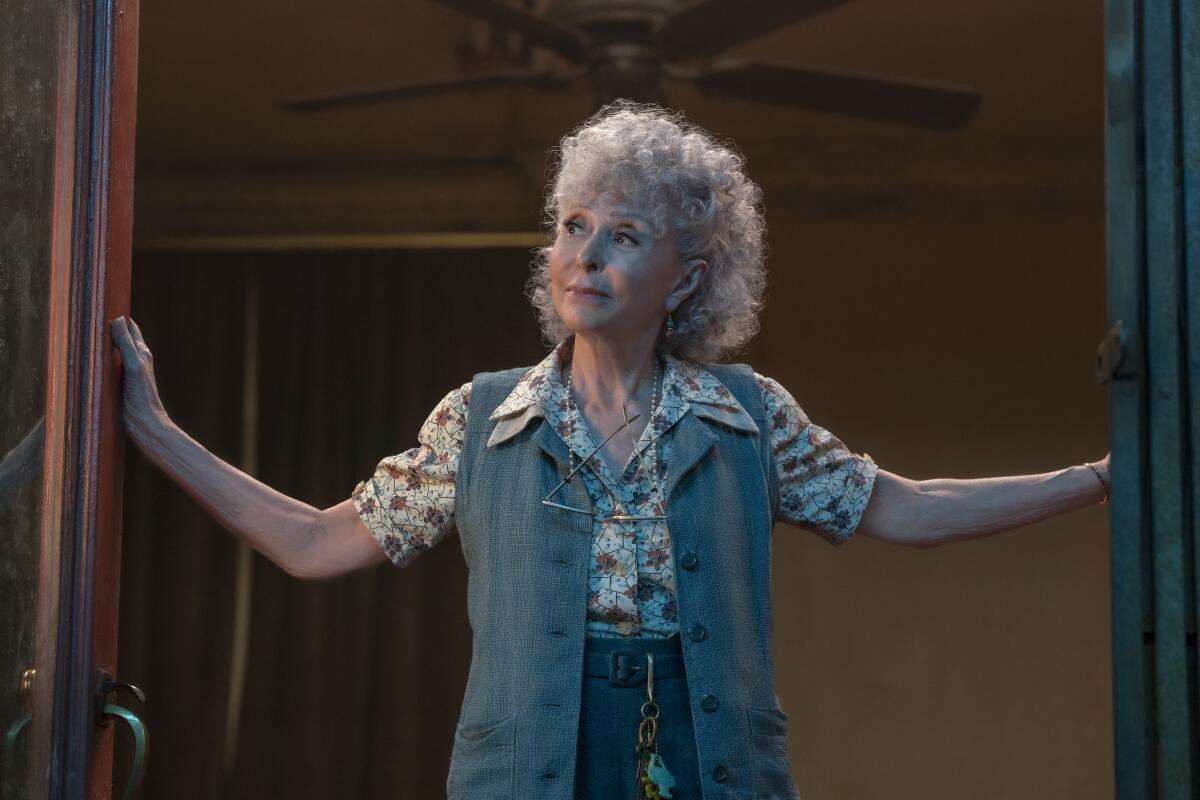
Moreno, now 89, is an executive producer on the new movie and also plays the crucial role of Valentina, standing in for the original’s soda-shop owner, Doc. In a role shrewdly recast as Puerto Rican, she helps counterbalance some of the white authority figures — including Brian d’Arcy James as the beleaguered Officer Krupke and Corey Stoll as his smug superior, Lt. Schrank — whose break-it-up attitude inevitably skews in favor of the white Jets. Valentina’s tough, affectionate guidance of our romantic hero, Tony (Ansel Elgort), adds a balancing note of cross-cultural friendship to the movie’s seething racial cauldron. And Moreno’s presence, which includes a sweetly quavering performance of “Somewhere,” functions as a poignant good-luck charm in a movie that positions itself as both glorious throwback and gentle corrective.
Some of the most crucial and engaging reparative work is done in the apartment where Bernardo bickers with his younger sister, María (outstanding newcomer Rachel Zegler), and his girlfriend, Anita (Ariana DeBose), in a free-flowing mix of English and deliberately unsubtitled Spanish. The point is to assert not only the ubiquity of Spanish as an American language but also to heighten the timeless, universal qualities of the story; Bernardo’s smothering protectiveness, María’s spirited defiance and Anita’s street-wise exasperation require no translation, especially since Alvarez, Zegler and especially DeBose give such vibrant, emotionally immediate performances.
Spielberg’s filmmaking, of course, is another language intuitive enough for any moviegoer to understand. It may be worth noting that America’s most popular director has never before directed an entry in what was once America’s most popular film genre, but that fact almost pales into insignificance given his instinctive sense of visual rhythm, proportion and kinetic flow, his gift for orchestrating moments that trigger near-Pavlovian bursts of feeling. When the Sharks and Jets converge at a school gym for a little mambo-a-mambo, the dazzling swirls of color (supplied in part by Paul Tazewell’s costumes) and the unifying sweep of the camera produce a special kind of rapture. The collision of bodies — and of tempers, cultures, identities — yanks you into the moment with an almost physical force.
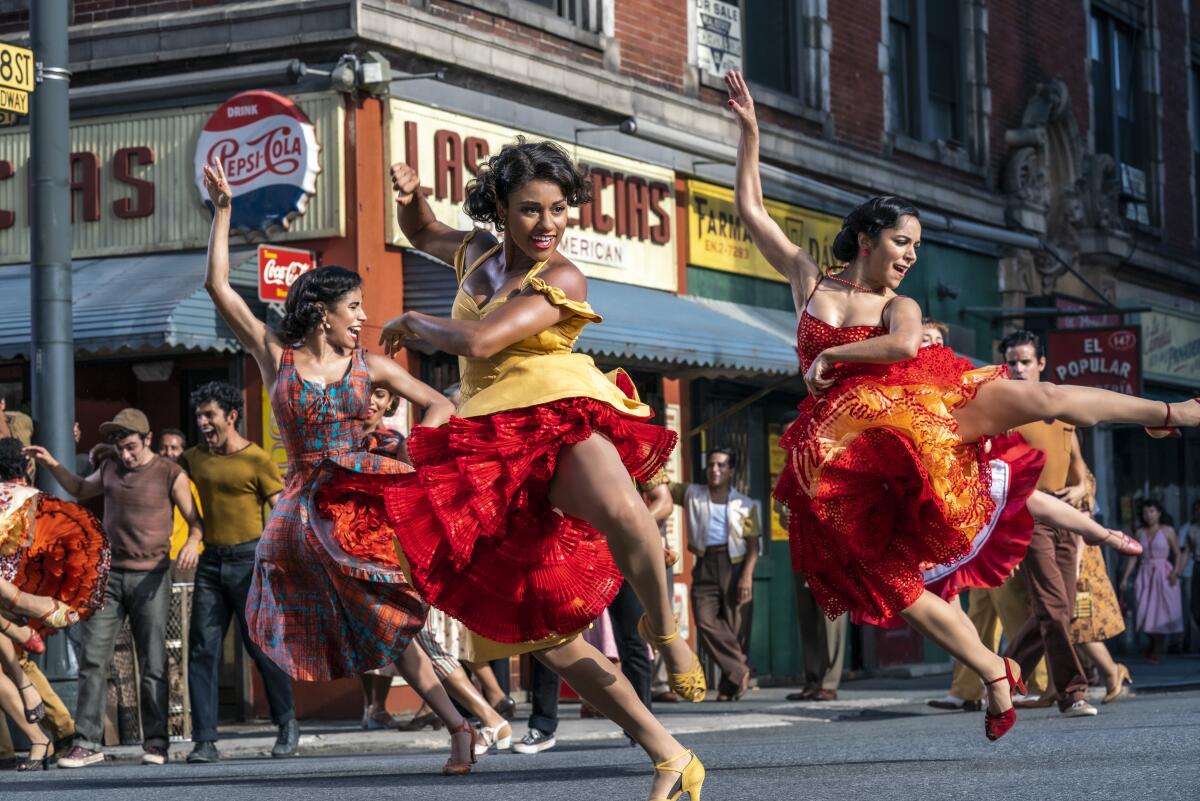
That dance serves as the backdrop for the first glimmers of romance and early rumors of a rumble. Enter Riff’s best friend, Tony, the peace-loving Romeo who locks eyes with María’s fresh-faced Juliet, cementing this movie’s ill-fated love story and setting its climactic waves of violence in motion. Elgort can move gracefully through the frame, as he demonstrated in “Baby Driver,” and he croons his way pleasantly if not too forcefully through Tony’s big early numbers like “Something’s Coming” and “María.” Still, there’s often a woodenness to the actor’s expressions, an excess of soft-eyed brooding, that doesn’t fully overcome Tony’s fundamental drippiness as a character. When Anita urges María to “forget that boy and find another,” you may find yourself nodding in agreement.
The superb Zegler, by contrast, brings a quality of luminous intelligence even to María’s wide-eyed naiveté; her clear-as-a-bell singing and deft timing serve her well amid the ebullient comedy of “I Feel Pretty,” and also amid the soaring passions of “Tonight,” in which a fire escape becomes Tony and María’s romantic refuge. That scene has long been one of “West Side Story’s” emotional (and literal) high points, and Spielberg’s staging and blocking — aided here, as ever, by Justin Peck’s sterling choreography — are a particular model of how dynamic camera movement, strategic closeups and physically nimble performers can breathe fresh life into even the oldest chestnut.
Directing a musical — and a version of a musical he’s loved since childhood — has shaken something loose in Spielberg. Why “West Side Story,” why now? To watch this movie is to see and hear the answer. With every number you can feel him playfully challenging Wise and Robbins’ interpretation and also, crucially, challenging himself, whether he’s having Tony, Riff and their friends play an acrobatic game of keep-away with a gun during the tense, disquieting “Cool” or staging the riotous comic relief of “Gee, Officer Krupke!” in a police department station house, all the better for the Jets to thumb their noses at authority. (Among the other young actors distinguishing themselves here are Josh Andrés Rivera as María’s jilted boyfriend, Chino, and Iris Menas as the Jets’ tagalong-turned-informant, Anybodys.)
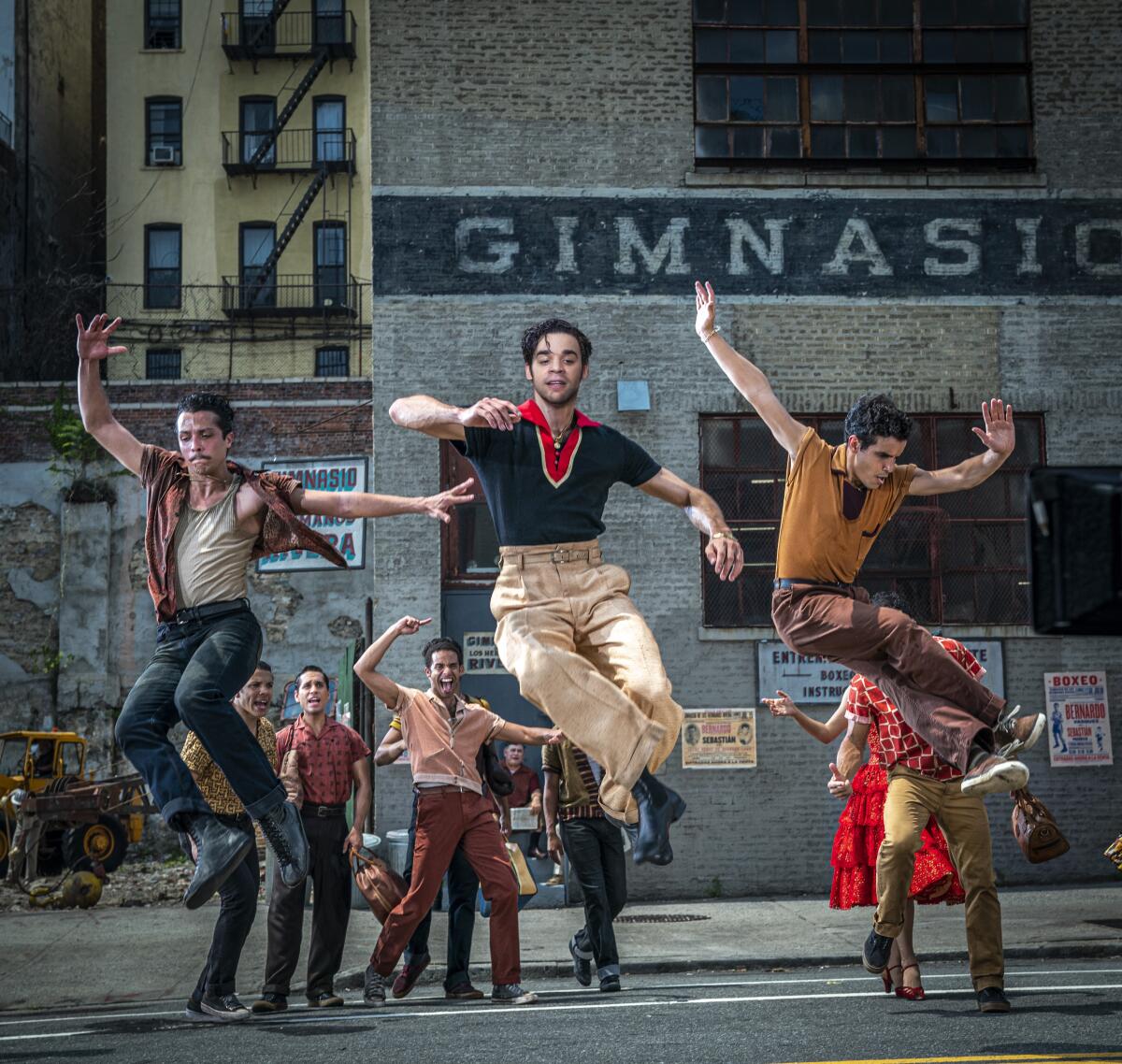
It reaches an apotheosis with “America,” in which Anita and Bernardo spar with quick-witted ingenuity over the joys and perils of assimilation — a journey that rightly progresses from a domestic squabble to a traffic-stopping dance of almost kaleidoscopic beauty. Therein lies the spry paradox of this “West Side Story,” which knows that in sensitive enough hands, close-to-the-bone realism and bright-hued formalism can be flip sides of the same stylistic coin. Spielberg’s movie may be rougher, grittier, more lived-in and, in terms of cultural representation, more truthful than its 1961 cinematic incarnation. But it is also more unabashedly classical, more radiantly stylized, than just about anything a major American studio has released in years.
That includes some of Spielberg’s own movies. Over the past decade or more he has undertaken a doggedly optimistic search for what you might call the soul of America — a quest that has reliably led him into the past, into the Watergate-era newsrooms of “The Post” and the Civil War-era congressional chambers of “Lincoln” (another Kushner-Spielberg collaboration). “West Side Story” belongs more in their company than you might think; it isn’t historical drama, but there’s no overlooking its place in history, or its alternately confusing and clarifying vision of how divisions of age, race and gender play out in the body politic. Spielberg, attentive as he is to the quality of the singing and dancing, operates from the conviction that this Broadway-to-Hollywood warhorse still has something important to say.
And conviction — a commitment that can’t be faked, and a quality by which every musical lives or dies — is what underpins, energizes and ultimately justifies this “West Side Story.” By the end, I was less moved by Tony and María’s tragic love story, which veers expectedly between sweetness and creakiness, than I was by Spielberg’s sheer faith in the transporting power of movies. He believes there’s still a place for them, and for us.
‘West Side Story’
Rating: PG-13, for some strong violence, thematic content, suggestive material and brief smoking
Running time: 2 hours, 36 minutes
Playing: Starts Dec. 10 in general release
More to Read
Only good movies
Get the Indie Focus newsletter, Mark Olsen's weekly guide to the world of cinema.
You may occasionally receive promotional content from the Los Angeles Times.

